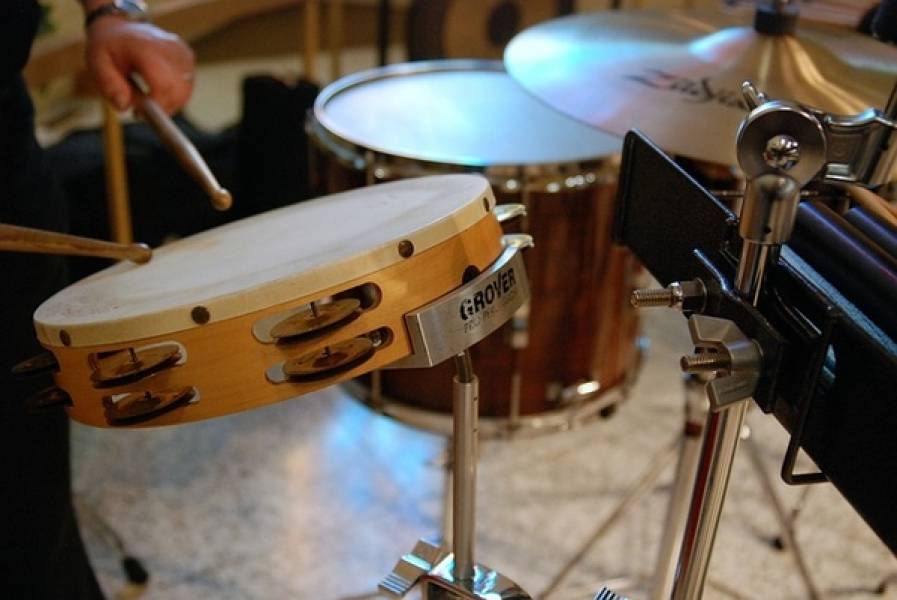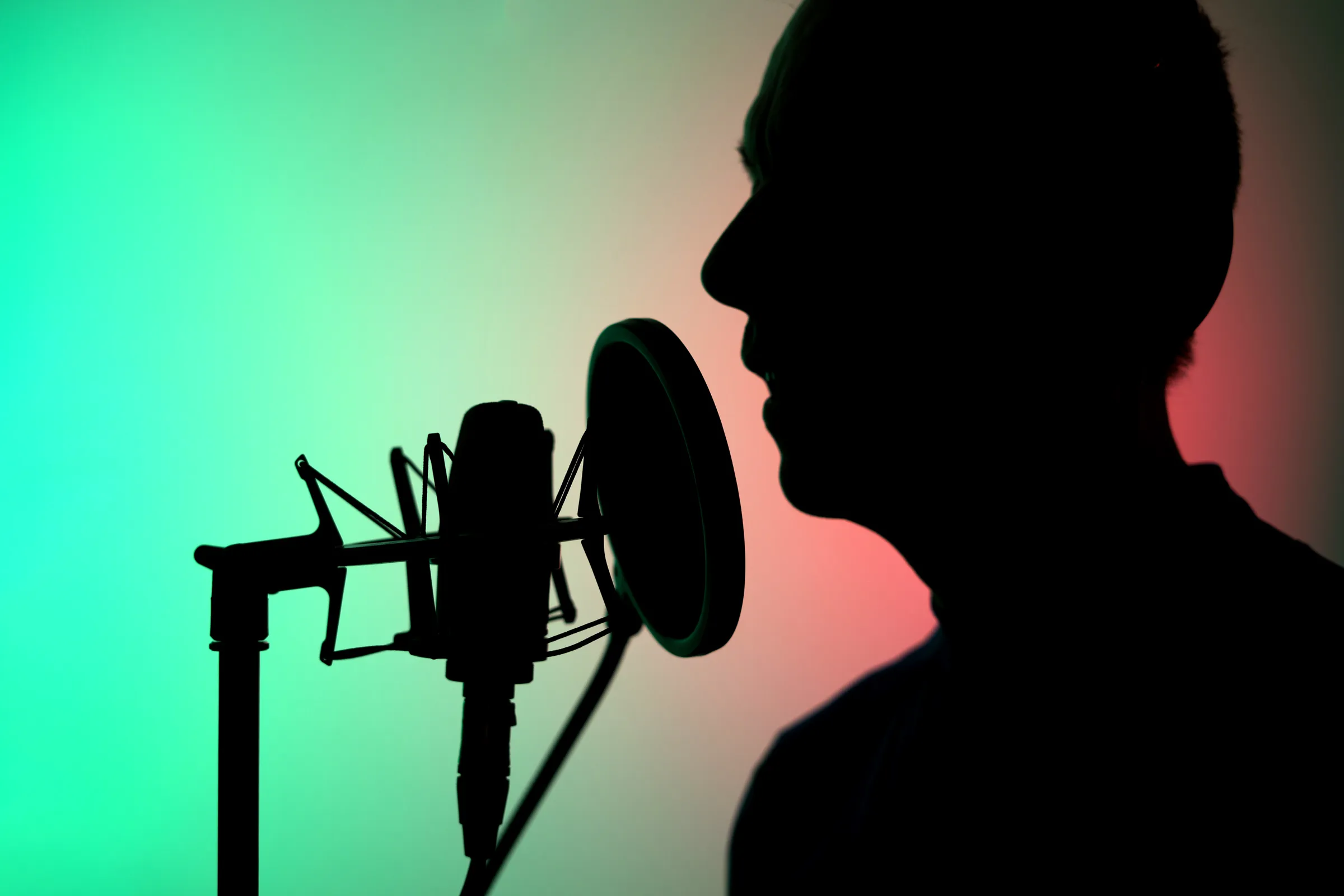Contents
Introduction

Music Therapy: Techniques, Applications, and Effectiveness
Music therapy is a therapeutic practice that uses music and musical activities to address psychological, emotional, and physical needs. This approach leverages the inherent qualities of music—such as rhythm, melody, and harmony—to support mental health, promote emotional expression, and foster personal growth. Music therapy is used in various settings, including hospitals, schools, and private practices, and is effective for individuals across different age groups and backgrounds. It provides an alternative way to communicate and connect, particularly for those who find verbal expression challenging.
This article provides an overview of music therapy, detailing its core techniques, applications across various mental health conditions, and overall effectiveness. It will also list down common misconceptions and criticisms associated with music therapy and evaluate its impact on emotional and psychological well-being.
What is Music Therapy?
Music therapy is a form of therapy that integrates music and therapeutic techniques to improve emotional, cognitive, and physical functioning. Developed in the early 20th century and formalized by pioneers such as E. Thayer Gaston and Nordoff-Robbins, music therapy combines elements of music creation, performance, and listening with therapeutic principles. It allows individuals to express themselves through musical activities, such as playing instruments, singing, and composing, which can be particularly helpful for those who struggle with traditional verbal communication. Music therapists adapt their techniques based on each person’s unique needs, employing music to aid emotional processing, mental development, and physical rehabilitation.
Listening to music is often seen as a simple way to lift your spirits, but research is revealing that music offers far more than just a temporary mood boost. The field of music therapy is expanding, demonstrating that music can have significant therapeutic effects on both the body and mind. Studies have shown that music therapy can be beneficial for various conditions, including cancer, attention deficit disorder (ADD) in children, and more. Hospitals are increasingly incorporating music therapy to alleviate pain, reduce stress, prevent depression, encourage movement, and soothe patients.
Real-Life Example: An individual experiencing depression might engage in music therapy by composing a song that reflects their feelings of sadness and despair. Through the process of writing and performing the song, they can articulate their emotions and gain a sense of relief. The act of creating and reflecting on their music provides a means to explore their emotional state and develop coping strategies, leading to improved mood and self-awareness.
Why is Music Therapy Important?
Music therapy is important because it offers a unique and versatile medium for emotional and psychological expression. Music’s universal appeal and ability to evoke emotional responses make it an effective tool for exploring and addressing a wide range of issues. It provides a non-verbal way to communicate feelings, process trauma, and enhance personal growth. Music therapy supports emotional release, cognitive development, and social interaction, making it a valuable tool for individuals of all ages. Its adaptability across different settings and conditions underscores its significance as a therapeutic approach.
Types of Music Therapy
- Analytical Music Therapy: This approach uses improvised musical “dialogue” through singing or playing an instrument to express unconscious thoughts, which are then reflected upon and discussed with the therapist. It aims to provide insight into inner psychological processes and facilitate emotional healing.
- Benenzon Music Therapy: This method integrates psychoanalytic concepts with music-making to explore your “musical sound identity,” reflecting how external sounds align with your internal psychological state. It helps individuals uncover and articulate deep-seated emotions and psychological patterns.
- Cognitive Behavioral Music Therapy (CBMT): This structured approach combines cognitive behavioral therapy (CBT) with music to reinforce and modify behaviors through activities such as listening, dancing, singing, or playing instruments. It focuses on practical strategies to address specific behavioral and emotional challenges.
- Community Music Therapy: Focused on facilitating change within a community, this group-based approach requires active engagement from all members to achieve collective goals. It aims to build social connections and address community-wide issues through collaborative music activities.
- Nordoff-Robbins Music Therapy: Also known as creative music therapy, this method involves instrument playing and improvisation to promote self-expression, often accompanied by the therapist’s use of another instrument. The therapy fosters spontaneous creativity and enhances emotional communication.
Techniques Used in Music Therapy
- Songwriting: This technique involves composing and performing original music to articulate and explore emotions, particularly helpful for individuals with Major Depressive Disorder (MDD). Songwriting allows clients to reflect on their feelings of sadness and despair, gain deeper insight, and develop coping strategies.
- Receptive Music Therapy: This approach involves listening to calming and soothing music to help manage symptoms and develop relaxation techniques. It is particularly beneficial for individuals with anxiety disorders, such as generalized anxiety disorder (GAD), by promoting relaxation and reducing anxiety levels.
- Active Music Therapy: This technique includes engaging in musical activities like playing instruments and participating in musical interactions. It supports individuals with Autism Spectrum Disorder (ASD) by improving communication skills, social interaction, coordination, and emotional expression.
- Improvisational Music Therapy: This method involves creating and performing music spontaneously to reflect on and process traumatic experiences. It helps individuals with trauma and PTSD articulate their memories, gain emotional relief, and build resilience.
How Does Music Therapy Work?
Music therapy’s effectiveness can be explained by five key factors, according to Koelsch (2009):
- Modulation of Communication: Music serves as a powerful means of communication, particularly in non-verbal contexts. It enhances relational connections by facilitating emotional expression and social bonding. Music therapy often improves social interactions and communication in individuals with developmental or speech disorders, allowing them to express themselves in ways they otherwise might not be able to (Koelsch, 2009).
- Modulation of Attention: Music captures and directs attention, helping individuals shift focus away from negative stimuli such as anxiety, pain, or distress. By diverting attention, music can reduce the perception of pain or discomfort during medical procedures or stressful events. This redirection allows individuals to experience relief and engage more positively with their environment (Koelsch, 2009).
- Modulation of Emotion: Music therapy influences emotional regulation by engaging brain regions responsible for generating and modulating emotions. It can initiate, sustain, or change emotional states, which explains why music is often used to alleviate feelings of sadness or anxiety. By stimulating these emotional pathways, music can be an effective tool for managing emotional dysregulation and mood disorders (Koelsch, 2009).
- Modulation of Cognition: Cognitive functions are also impacted by music. Music therapy enhances memory by aiding the encoding, storage, and recall of both musical and non-musical experiences. This is particularly useful in therapy for individuals with memory impairments or conditions like dementia. Music also activates areas of the brain that process musical structure and meaning, further engaging cognitive resources (Koelsch, 2009).
- Modulation of Behavior: Music therapy can condition and evoke specific behaviors, such as movement and coordination. By harnessing rhythm, music helps regulate actions like walking, speaking, or grasping. This is especially beneficial in motor rehabilitation for individuals recovering from physical injuries or neurological conditions like Parkinson’s disease (Koelsch, 2009).
Notable Figures in Music Therapy
E. Thayer Gaston: A pioneer in music therapy, Gaston developed early theoretical frameworks and practices that laid the foundation for the field. His work emphasized the therapeutic potential of music for emotional and cognitive development. Gaston also contributed to the development of systematic approaches for music therapy that are still used today.
Paul Nordoff and Clive Robbins: Founders of Nordoff-Robbins Music Therapy, they developed a unique approach that combines improvisation and active music-making to address emotional and developmental needs. Their methods focus on the therapeutic use of music to foster communication and personal growth.
Juliet Hess: A contemporary music therapist, Hess has contributed to the field with research on the impact of music therapy on trauma recovery and emotional resilience. Her work explores innovative techniques and applications in various therapeutic contexts.
Juliet Hess- Image Source: mdg26.weebly.com

Theories Influenced by Music Therapy
- Existential Therapy: Music therapy aligns with existential therapy’s focus on exploring meaning, self-identity, and the human condition. Through music, individuals confront existential concerns such as meaninglessness and isolation, and find personal significance and connection. This approach encourages clients to reflect on their existence and make meaningful changes in their lives.
- Narrative Therapy: Music therapy supports narrative therapy by allowing clients to express and reshape their personal stories through musical expression. Creating and performing music enables individuals to reframe their experiences, explore alternative narratives, and gain new perspectives on their lives and identity.
- Person-Centered Therapy: Music therapy is consistent with person-centered therapy’s emphasis on creating a supportive and empathetic therapeutic relationship. Through music, therapists provide a non-directive space where clients feel valued and understood, promoting self-exploration and personal growth in a safe and accepting environment.
- Solution-Focused Therapy: Music therapy complements solution-focused therapy by helping clients identify and build on their strengths through creative music activities. By focusing on positive experiences and achievable goals, music therapy encourages individuals to explore solutions and develop practical strategies for overcoming challenges.
- Eclectic Therapy: Music therapy integrates well with eclectic therapy, which draws from various therapeutic approaches to meet clients’ needs. By incorporating techniques from different models, such as improvisation or receptive listening, music therapy enhances the flexibility and effectiveness of an eclectic therapeutic approach.
Applications of Music Therapy in Treating Mental Health Disorders

Major Depressive Disorder
Music therapy provides a valuable approach for individuals with Major Depressive Disorder (MDD) by facilitating emotional expression and processing through creative means.
Example: A person with MDD might use Songwriting to reflect on their experiences of sadness and low energy. By crafting lyrics and melodies that resonate with their emotional state, they gain a deeper understanding of their feelings, experience emotional relief, and develop personalized coping strategies to manage their depressive symptoms more effectively.
Image Source: montarebehavioralhealth.com
Music therapy offers significant benefits for individuals with anxiety disorders by providing tools to manage symptoms and develop effective relaxation techniques.
Example: An individual with generalized anxiety disorder (GAD) might participate in Receptive Music Therapy sessions, where they listen to carefully selected instrumental music that promotes tranquility. By focusing on the soothing rhythms and melodies, they practice mindfulness and achieve a state of calm. This process helps them lower their physiological symptoms of anxiety.
Image Source: sandracohenphd.com

Anxiety Disorders

Autism Spectrum Disorder
Music therapy supports individuals with Autism Spectrum Disorder (ASD) by enhancing their communication skills and emotional expression through interactive musical experiences.
Example: A child with ASD might engage in Active Music Therapy by playing percussion instruments in a structured group setting. Through Active Music Therapy, the child learns to follow rhythms, take turns, and respond to cues from others, which enhances their social skills and coordination. Additionally, the process of making music provides a creative and safe outlet for emotional expression, allowing them to explore and communicate feelings that might be difficult to articulate verbally.
Image Source: thekeyschool.org
Certifications Programs for Music Therapist
- Certification Board for Music Therapists (CBMT) Certification: CBMT offers the Music Therapist-Board Certified (MT-BC) credential, which is recognized internationally as the standard for music therapy professionals. The certification process includes passing a comprehensive exam and maintaining continuing education requirements. CBMT certification ensures that therapists possess the necessary skills to provide evidence-based music therapy in various settings, including hospitals, schools, and mental health clinics, while adhering to ethical standards and professional competence.
- American Music Therapy Association (AMTA): AMTA provides a structured pathway for music therapists to become credentialed professionals through approved education and clinical training programs. AMTA emphasizes ethical practices, client-centered care, and the integration of music as a therapeutic tool in diverse clinical settings. Music therapists certified under AMTA can work in mental health, special education, and rehabilitation settings, where music is used to promote emotional, cognitive, and physical well-being.
- British Association for Music Therapy (BAMT): BAMT offers professional registration for music therapists in the UK, ensuring that practitioners meet rigorous clinical and academic standards. Registered music therapists (RMTs) under BAMT are trained to use music as a therapeutic medium to address emotional and psychological challenges. The program emphasizes reflective practice, ethical standards, and the importance of client well-being, helping therapists foster emotional resilience and personal growth through music.
- Canadian Association of Music Therapists (CAMT): CAMT provides a certification pathway for music therapists in Canada, leading to the designation of Accredited Music Therapist (MTA). The CAMT certification program focuses on integrating music with mental health practices, ensuring that therapists are equipped to deliver high-quality therapeutic interventions. CAMT certification emphasizes cultural sensitivity, ethical practice, and the use of music to promote healing in a wide range of therapeutic settings, including healthcare facilities and community programs.
Top Instruments Used In Music Therapy

Guitar
The guitar is widely used in music therapy due to its versatility. It can create soothing melodies for relaxation or energizing rhythms for active engagement.

Piano/Keyboard
The piano or keyboard provides a broad range of sounds and is commonly used to explore emotions and stimulate cognitive functions

Drums/Percussion Instruments
Drums and other percussion instruments are popular in music therapy for rhythmic activities and group engagement.

Voice
The human voice is a central instrument in music therapy, often used in singing, chanting, vocal improvisation, or guided imagery.
Common Myths About Music Therapy
| Myth | Explanation |
| Music Therapy is Just Playing Music | Music therapy is not merely about playing or listening to music; it involves structured interventions designed to address specific therapeutic goals. Therapists use music in various ways to facilitate emotional expression, cognitive development, and social skills. |
| You Need to Be Musically Talented | Music therapy does not require clients to have musical talent or experience. The focus is on the therapeutic process and personal expression rather than musical skill. Clients of all musical abilities can benefit from music therapy. |
| Music Therapy is Only for Children | Music therapy benefits individuals of all ages, including children, adults, and the elderly. It is used to address a wide range of issues across different life stages, such as developmental disabilities, mental health conditions, and age-related challenges. |
| Music Therapy is a Quick Fix | Music therapy is not a quick solution but a therapeutic process that takes time and engagement. It involves ongoing sessions and personalized approaches to address complex emotional and psychological issues. |
Criticisms of Music Therapy
- Limited Empirical Evidence: Despite its growing recognition, music therapy is often criticized for a lack of robust empirical evidence supporting its effectiveness. Many studies rely on small sample sizes or lack rigorous control groups, making it difficult to draw definitive conclusions about its overall efficacy. There is a call within the field for more high-quality, large-scale research to better establish and validate the therapeutic benefits of music therapy.
- Subjectivity in Interpretation: The interpretation of musical content and therapeutic outcomes in music therapy can be highly subjective. Different therapists may have varying perspectives on the meaning and significance of a client’s musical expression, which can lead to inconsistent conclusions and therapeutic results. This subjectivity complicates efforts to standardize treatment approaches and measure effectiveness objectively, highlighting a need for more standardized protocols and evaluation methods.
- Variability in Practice: Music therapy practice can vary significantly among practitioners, with differences in techniques, theoretical frameworks, and therapeutic goals. This variability can lead to inconsistent treatment experiences and outcomes for clients. The lack of uniformity in practice makes it challenging to develop standardized protocols and compare results across studies and clinical settings, underscoring the need for greater consistency and guidelines within the field.
Conclusion
Music therapy offers a unique and versatile approach to addressing emotional, cognitive, and physical needs through musical activities. By leveraging the inherent qualities of music, such as rhythm and melody, it facilitates emotional expression, cognitive development, and physical rehabilitation. Despite its broad applications and reported benefits, music therapy faces challenges, including limited empirical evidence, subjectivity in interpretation, and variability in practice. Addressing these criticisms through rigorous research and standardized protocols will enhance its effectiveness and consistency. Overall, music therapy remains a valuable tool for personal growth and healing, offering alternative ways to communicate and connect for individuals across diverse backgrounds.
References
- Bruscia, K. E. (2014). Defining music therapy (3rd ed.). Barcelona Publishers.
- Bunt, L., & Stige, B. (Eds.). (2014). Music therapy: An art beyond words. Routledge.
- Hargreaves, D. J., & North, A. C. (Eds.). (2010). The social and applied psychology of music. Oxford University Press.
- Aigen, K. (2005). Music therapy: An introduction. Barcelona Publishers.
- Bradt, J., & Dileo, C. (Eds.). (2014). Music interventions for mechanically ventilated patients. Cochrane Database of Systematic Reviews.
- Clements-Cortes, A. (2014). Music therapy and dementia: From cognition to therapy. Routledge.
- Smeijsters, H., & Van Gerven, M. (2013). Music therapy and dementia: From theory to practice. Routledge.
- Davis, W. B., & Gfeller, K. E. (2013). Music therapy: A perspective from the field. The Music Therapy Journal, 30(2), 122-137.
- Bradt, J., & Dileo, C. (2014). Music interventions for mechanically ventilated patients. Cochrane Database of Systematic Reviews.
- MacDonald, R. A. R., & Kreutz, G. (Eds.). (2012). Music, health, and well-being: Research and practice. Oxford University Press.
Explore more Theories & Therapies








